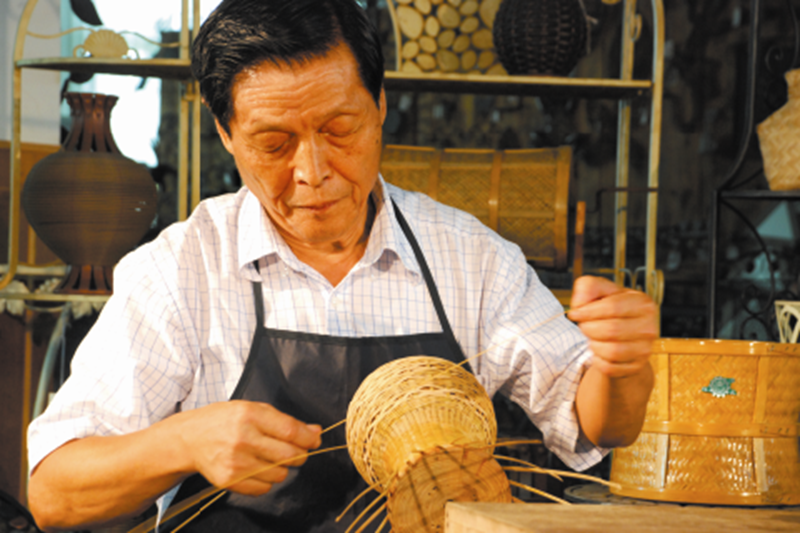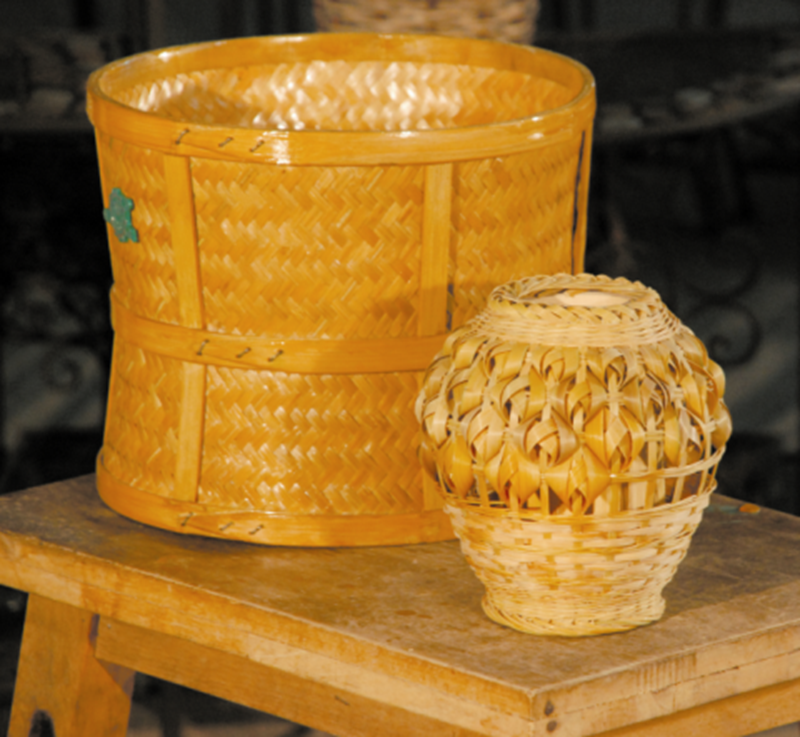
A man engages in Anxi bamboo and rattan weaving. [Photo/fujian-szwhg.chaoxing.com]
Anxi bamboo and rattan weaving is an art form in Anxi county, Quanzhou, Fujian province. It has been recognized as a representative project in the traditional fine arts category in the fourth batch of national-level intangible cultural heritage items.
Anxi bamboo and rattan weaving boasts a long history, flourishing at the end of the Tang Dynasty (618-907). It began to spread to rural areas during the Song (960-1279) and Yuan (1271-1368) dynasties, with the craftsmanship becoming increasingly refined. It is characterized by its precision, aesthetic appeal, durability, and versatility. Weaving is the primary technical process in shaping bamboo and rattan handicrafts. The weaving patterns are primarily categorized into three-dimensional weaving and flat weaving, with two weaving styles for forming these patterns.
There are six common weaving techniques, including cross weaving, herringbone weaving, and hexagonal weaving. Additionally, there are eight unique weaving techniques, such as weaving with bamboo strips, silk, elastic flowers, and inserting ribs. These techniques can create various textures inspired by animals and plants, such as diamond flowers, chrysanthemums, tortoise shells, and bows, resulting in a wide range of practical product applications.
Anxi bamboo and rattan weaving is gradually being refined, boasting both high artistic value and practicality.

Anxi bamboo and rattan weaving works. [Photo/fujian-szwhg.chaoxing.com]

Copyright © General Office of Fujian Provincial People's Government
Website Identification Code 3500000049Registration Number: 15003084
All rights reserved. The content (including but not limited to text, photo, multimedia information, etc) published in this site belongs to fujian.gov.cn.
Without written authorization from fujian.gov.cn, such content shall not be republished or used in any form.